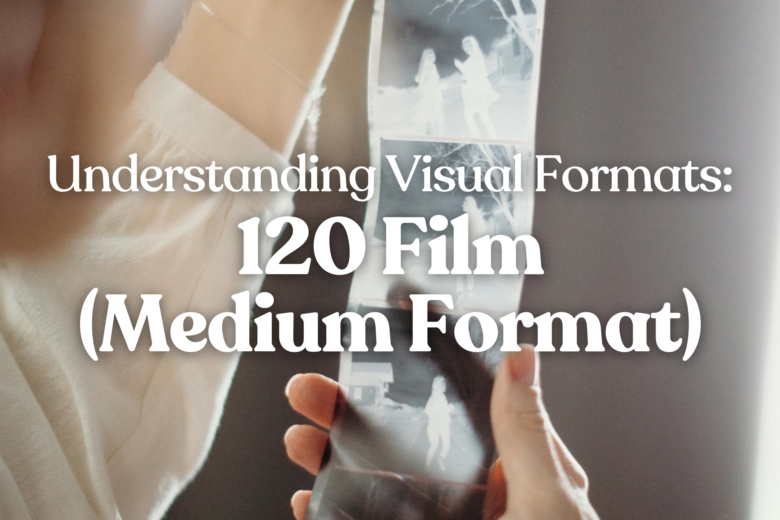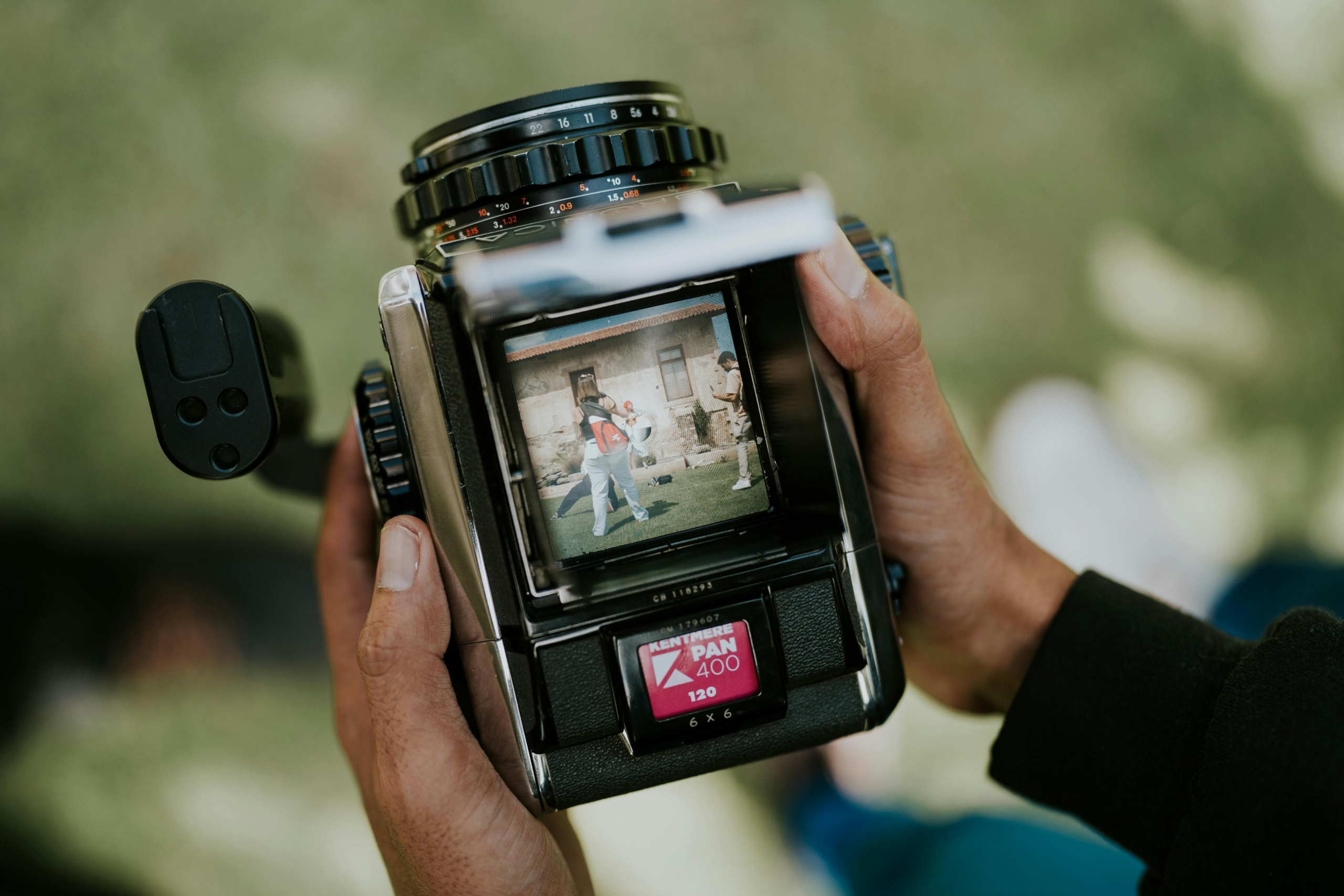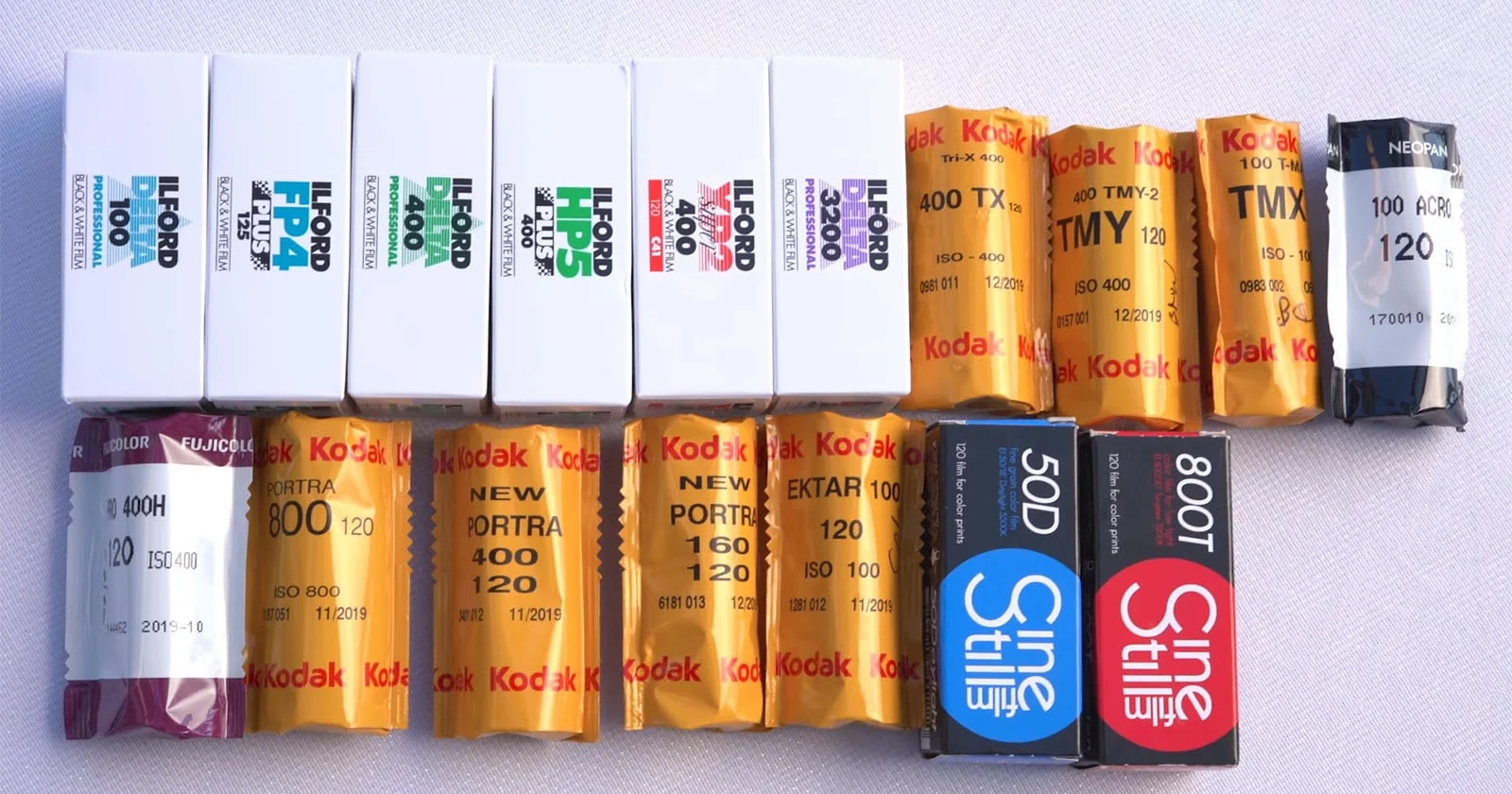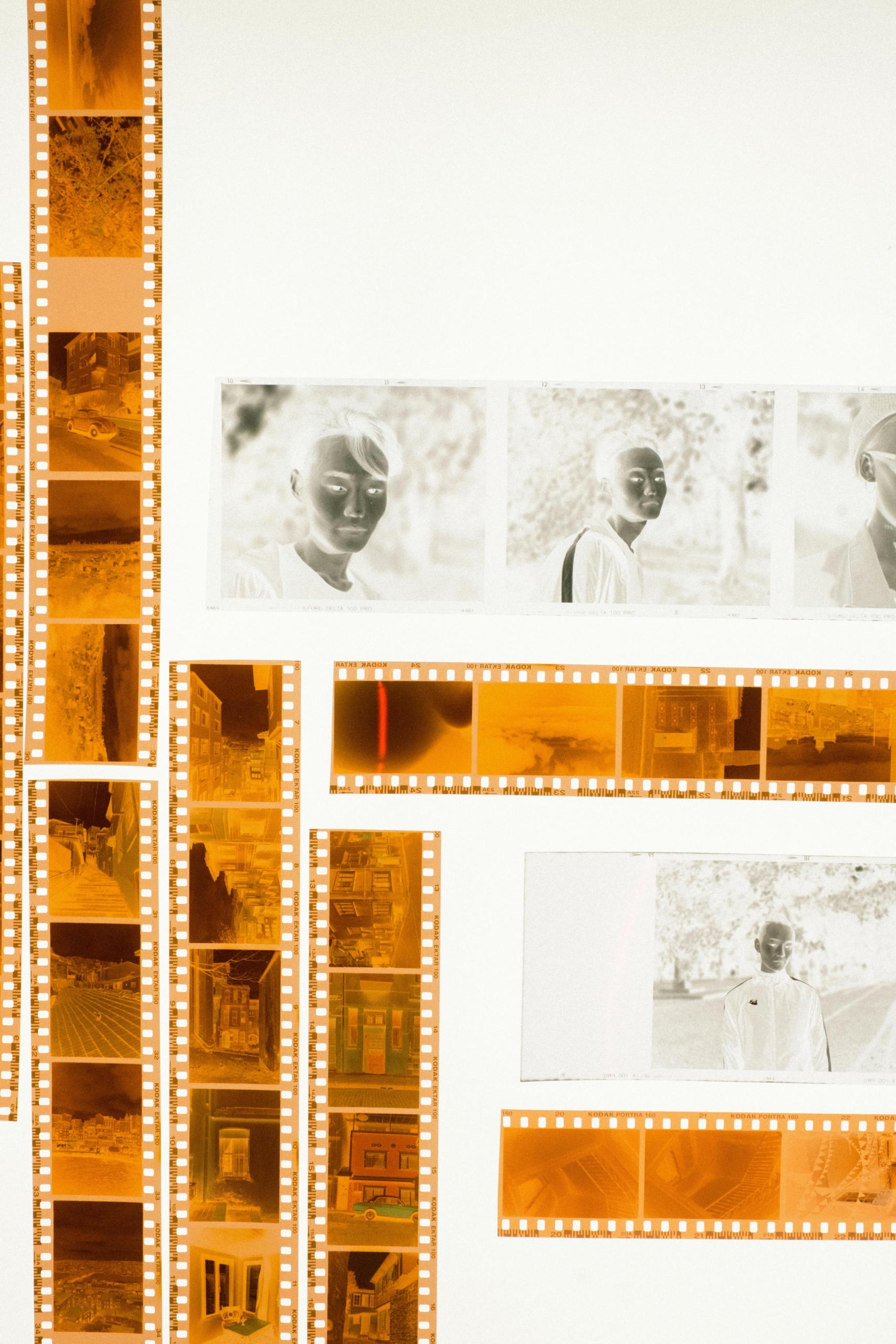If you’re curious about 120 film, also known as medium format film or 120 mm film, you’re in the right place. It’s over 100 years old and still a favorite among film photographers for its rich image quality and timeless look.
Here we break down what 120 film is and how it compares to other analog options, including 35mm and 220 film.
WHAT IS 120 FILM?
Originally introduced by Kodak for its Brownie No. 2 camera, 120 roll film has been around since 1901 and is still used for still photography today.
It’s often called medium format film, as the 120 film size produces images larger than the standard 35mm, but smaller than large-format sheet film. The bigger image size is one of the big draws of 120 film: it provides greater detail and smoother tonal range compared to smaller formats.
This type of film is used in medium format cameras, and was widely used for amateur and professional photography until the 1960s, though it is still used today despite being over a century old.
TYPES OF 120 FILM
When shooting with film, 120 photographers have two choices: color or black and white.
COLOR 120 FILM
Popular stocks include Kodak Portra and Fuji’s Pro 400H, though the latter has been discontinued and is hard to find.
BLACK AND WHITE 120 FILM
Black and white is a popular choice for timeless photography, as it emphasizes texture, contrast, and light in a way that color sometimes can’t. For that reason, Adox, Bergger, Foma, Ilford, Rollei, and Washi all offer black and white 120 film.
Black and white film is also popular with home developers as it’s relatively easy and affordable to process yourself. Plus, it tends to be more flexible when experimenting with camera settings like ISO.
PROS AND CONS OF 120 FILM
Like any format, 120 roll film has several pros and cons. Here’s what you need to know:
WHY PHOTOGRAPHERS LOVE 120 FILM
- More detail and resolution: Because 120 film has a much larger image area than 35mm, it captures more detail, making it ideal for printing big or zooming in without losing sharpness.
- Smoother grain: Even at higher ISOs, 120 medium format film tends to have finer grain, for a cleaner, more polished look.
- Multiple aspect ratios: Depending on your camera, 120 film can shoot in 6×4.5, 6×6, 6×7, 6×9, or even panoramic formats.
- Unique look: Medium format film photography has a certain “look”, thanks to its shallower depth of field and the subtle details in highlights and shadows. 120 film photos are often described as having a dreamy or immersive aesthetic.
WHAT TO CONSIDER BEFORE CHOOSING 120 FILM
- Fewer shots per roll: Unlike 35mm, which gives 24 or 36 exposures, 120 film only gets 8 to 16 frames per roll, depending on the camera’s format.
- Bulkier gear: Medium format cameras tend to be larger and heavier, and sometimes more complex to use.
- Higher cost: 120 film rolls are more expensive, with higher lab development costs. Not every photo lab accepts them, either.
120 FILM vs. 35MM: WHAT’S THE DIFFERENCE?
Both 120 roll film and 35mm film are popular with photographers, but each offers different experiences and results. The two main differences are image quality and convenience.
120 medium format film wins out when it comes to quality. It has a much larger negative, which means more resolution, better detail, and smoother tones. This makes it the go-to for photographers who want stunning, high-quality prints with rich image depth.
But 35mm is the go-to film for convenience. It’s more compact, easier to shoot, and gives you way more exposures per roll. It’s also generally cheaper and supported by more labs and camera models, including modern point-and-shoots and SLRs.
Here’s a side-by-side comparison of the two.
| Feature | 120 Film (Medium Format) | 35mm Film |
|---|---|---|
| Image Size | Much larger (e.g., 6×4.5 to 6×9 cm) | 24×36 mm |
| Image Quality | Higher resolution, smoother tones | Lower resolution, more noticeable grain |
| Grain | Finer and less distracting | More prominent, especially at high ISOs |
| Shots per Roll | 8 to 16 (depending on format) | 24 or 36 |
| Camera Size | Larger, often heavier | Smaller and more portable |
| Automation | Often fully manual | Wide range, from manual to fully automatic |
| Cost per Roll | Higher (film and development) | Lower |
| Availability | Still common, but fewer film options | Widely available in many film stocks |
| Best for | Portraits, landscapes, fine art, large prints | Everyday use, street, travel, action shots |
120 vs. 220 FILM: WHAT’S THE DIFFERENCE?
220 film is essentially a double-length version of 120 film, which means you get twice the number of exposures per roll. It was popular with pros who needed to shoot a lot without reloading, but fell out of fashion.
Today, 120 film is the standard, and most 220 stocks have been discontinued.
FINAL THOUGHTS
For both amateur photographers and seasoned professionals, 120 film has a lot to offer. Its larger format delivers stunning image quality and a distinctive look that’s hard to replicate with digital or even 35mm film.
Yes, it might require a bit more patience and care, but the payoff is absolutely worth it.
DIGITIZING MEDIUM FORMAT FILM
If you have 120 medium format negatives or slides sitting in storage, don’t let them fade away. EverPresent specializes in digitizing 120 film, whether it’s a few family portraits or an archive of artistic work. Our family-run business will scan and preserve your film with expert care.
Get in touch today to find out how to get started.




